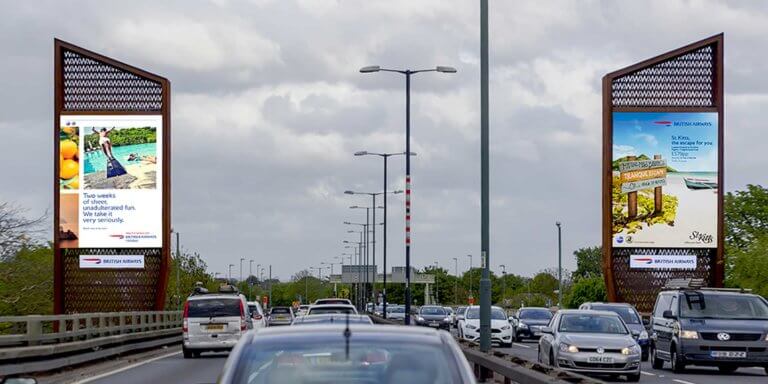
2020 has definitely taken the world by surprise, as no one could have predicted such a sudden change in our daily lives that would ultimately affect almost every industry on a global level. Businesses of every kind have had to quickly adapt to this drastic change in consumer behavior to stay relevant and afloat. The advertising industry has been directly affected by the changes in consumer behavior over this past year and businesses are now more inclined to reduce their ad spend. The pandemic has also caused advertisers to re-evaluate the types of mediums they will run their campaigns on. With digital advertisements like social media dominating the industry, advertising mediums like Out-of-Home (OOH) have been struggling during the lockdown. However, the silver lining for OOH is the acceleration of technological advancements and the growth in targeted solutions to reach consumers where they can be found, staying close to home.
A Shift in OOH and Consumer Behavior
When we think of OOH advertisements we tend to think of large billboards that light up the city. But the OOH industry is much more diverse than just billboards. Our everyday lifestyles (pre-Covid) exposed us to many OOH ads, starting from the moment we stepped foot outside, to the moment we were back home. From public transportation, to restrooms, to taxis, we are constantly bombarded with the ads that surround us. However, since the lockdown these ads are missing an audience and therefore are no longer being prioritized by advertisers. The following are some OOH examples that are encountering this problem:
1. Public Transportation
As people stay at home due to the lockdowns set by governments in order to reduce the spread of the virus, OOH advertisements located in environments that are deemed as high-risk areas are experiencing low reach. Public transportation modes such as subways, railways, and metro stations are no longer the ideal locations for OOH ads. Since people are now avoiding crowded places and prefer to drive their cars instead, OOH advertisers are favoring locations that will grant them a higher reach. Personal vehicles have become somewhat of a safe haven for people during the pandemic. In New York, many millennials have purchased a car during the pandemic with over half reporting that their travel patterns are the same or greater as they were before the lockdown. 40% of millennials said they are walking more while 29% said they are driving more. OOH advertisements are now finding more opportunities to advertise through billboards, truck side ads, ads on the sides of buildings, and taxi ads – all of which can be seen from their cars and neighborhood walks. Locations that are also receiving more foot traffic due to the lockdown are grocery stores, gas stations, parks, and other essential businesses. This is creating a shift in consumer behavior that advertisers need to take into consideration as we continue in our battle against the COVID-19 spread.

The pandemic has caused the majority of the population to work from home and make trips to the local shops within their neighborhoods. Being at home for a long period of time has taken its toll on people and as a result, they now have more of an appreciation for the outdoors. An Out of Home Advertising Association of America (OAAA) study found that 65% of people are trying to get out of their homes as often as possible, even if it’s only for a drive or a walk around town. 40% claimed to be walking more, 29% are driving more, and 27% are scootering/biking more. Additionally, 25% elected to stay within a 50-mile radius of their home.
2. Indoor Elevators
A small box-shaped room where people are usually cramped up for several minutes is definitely not where you want to be during a pandemic. Riders are now advised to face the wall and most office buildings have now added decals on the floor that instruct people to stand with their feet pointed towards the corner. COVID-19 may revolutionize elevators to become glass-fronted touchscreens resembling smartphones, where they can withstand disinfection and have touchless call buttons that direct them by hovering a finger over the desired floor. With high-tech elevators looking to be the solution for touching surfaces in crowded places, we can predict the future for advertisements in elevators will also follow in these digital footsteps.
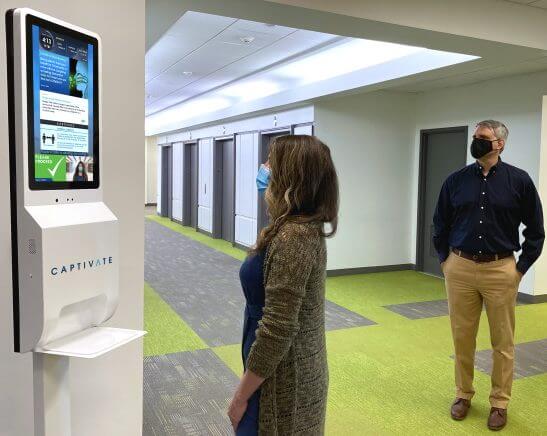
Captivate, a location-based network with screens displayed in elevators and lobbies of office buildings, recently announced the launch of Captivate Scan. It is an all-in-one solution that aims to help maintain safe environments that prioritize the health and well-being of office tenants. It provides tenants with the convenience to check their body temperature using a scanner, a facial covering (mask) detection, and a hand sanitizer dispenser. Devices similar to these could be the future of elevator advertising, as Captivate’s digital advertising screens placed in office lobbies and elevators reach approximately 13 million views across North America, while also serving a number of additional purposes.
3. Cinemas
Many theaters have been closed since March due to the pandemic and the future doesn’t seem too promising as people weigh the risks of contracting COVID-19 in exchange for the movie theater experience. Warner Brothers announced that all of its movies next year will stream on HBO Max on the same day that they get to theaters. The pandemic has accelerated the shift from movie theaters to streaming services as the industry went from a billion dollar business to zero overnight. As for advertising on the big screen pre-pandemic, advertisers greatly valued displaying ads in movie theaters given that the viewer’s attention is focused on watching what is right in front of them with no option for skipping the ad. But for the time being, advertisers no longer have this opportunity and will need to focus their efforts on other mediums to meet consumers where they are – preferably on a platform that does not have the skippable feature as well.
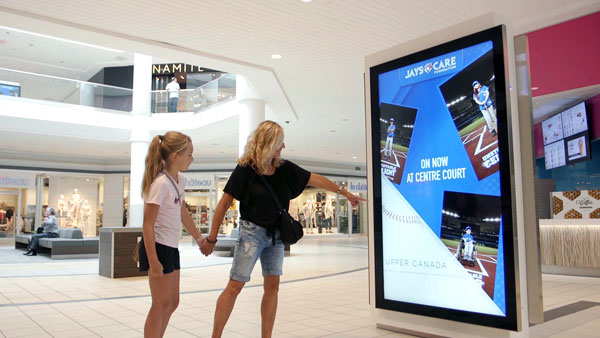
Cinema Advertising Companies are finding innovative ways to combat vacant theatres by exploring the digital OOH market further. Cineplex Media is Canada’s Premium Cinema Advertising Network that advertises brands on theatre screens to movie-going audiences. Cineplex Digital Media (CDM) launched Flex SmartEngine, a machine learning software platform for its place-based OOH screens. Brands are now able to leverage their data in-store to deliver more customized content to customers in real time. The launching of these OOH advertising strategies came at the perfect time in response to the significant traffic changes the pandemic has presented. Now more than ever, there is a high demand for smarter advertising options. The smart engine provides business insights to monitor and measure an ad campaign’s effectiveness and recommends new content types that can perform better according to certain metrics. As online shopping continues to grow, the few who are still shopping in-store want to get in and out as fast as possible. Therefore, retailers need to communicate with their customers quickly by showing relevant ad campaigns. Although it was tested in Cineplex’s theatres, the goal of the SmartEngine is to be used in retail locations.
4. Restrooms
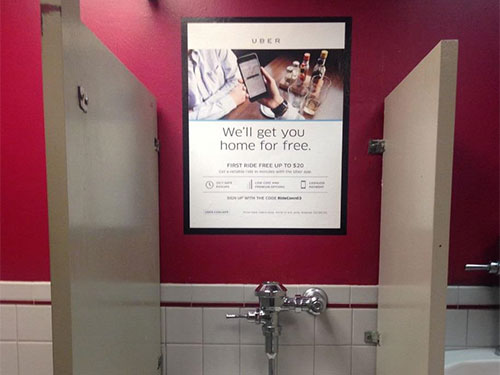
This category might not be the first thing that comes to your mind when you think of where to advertise, however these place-based displays hold a wide variety of formats that are located where groups gather for a number of reasons. Some of the most common places where these displays are found include the restrooms of restaurants and nightclubs, common areas in health clubs and bars, college and high school campuses, military bases, convention centers, arcades, waiting rooms, golf courses, parking garages, and rest areas. Most of the mentioned locations target places that offer some sort of leisure activity, dining, and entertainment; all of which are currently shut down due to the pandemic. This is a major change in consumer behavior, making place-based ads inessential in these locations and forcing advertisers to invest in other mediums. However, restaurants have been required to put up digital screens that display social guidelines. This has given brands an added opportunity to connect with their consumers through the usage of Digital-Out-of-Home (DOOH) screens in a closed environment. This enables brands to track and garner consumer data and footfalls of that particular area. This will give brands the opportunity to reach consumers in a more targeted, personalized, and customized manner once restaurants are able to reopen again.
OOH Ad Spend
The pandemic has caused a considerable drop in advertising spend in almost all parts of the world. Ad spends are down 9% on average across Europe, with Germany and France falling by 7% and 12% respectively. Consumers in countries with a high number of cases are eliminating gatherings. For this reason, advertisers are reluctant to use OOH mediums in locations where population is scarce. Furthermore, the pandemic has affected the cost of production impacting the budget and business decisions of large market players across industries globally. The uncertainty of the economic situation has created complications for accurately estimating present and future spending for OOH advertisers. The repercussions of the virus are resulting in a decrease in consumer spending, thus advertisers are debating whether they should delay their existing strategies until the situation has improved. Spending is likely to remain restrained until a vaccine for COVID-19 becomes widely available to the population. Despite the challenges the lockdowns have presented, consumers are beginning to travel locally again. This has given advertisers a push to want to reach consumers using OOH marketing during their commute, which will aid in a surge in ad spend. Group M, a world leading media investment company, and Magna, a centralized Mediabrands resource company expect ad revenues to increase by 5% and 6%, respectively, with a rapid growth in digital out of home marketing in 2021. With that being said,OOH is proving to be resilient, despite the tough year it had.
Digital Media vs OOH
With self-isolation and quarantine becoming the new norm, the consumption of online mediums and the need for Video-on-Demand (VOD), and other online video services, have significantly increased among consumers. Television consumption has seen an increase of 50.0% above the daily average. Furthermore, social media advertising has escalated due to its abundant usage and ability to connect people with their family members and friends in the only way possible right now. In-game advertisements are also gaining traction, as people are constantly looking for ways to entertain themselves during the lockdown. However, the excessive amount of time spent indoors is leading to screen fatigue which is proving to be a significant challenge for advertisers and marketers to engage consumers in an innovative way. As consumers long for an outdoor experience, more consumers have begun turning to the outdoors for a sense of relief, as reported by OAAA’s Q4 Harris Poll on Consumer Trends. Now that our trips are limited to only essential outings, when we are out we have a new appreciation for them that heightens our sense of awareness. An OAAA study found that 45% are noticing billboards and other OOH media more now than before the pandemic began. 69% have an increased appreciation for their outdoor surroundings and 68% feel they spend too much time on screens and are tuning out online ads. With digital fatigue becoming an issue and lockdowns constantly being pushed further, advertisers are not left with too many options to reach their target market. The following are solutions for reaching these audiences using OOH advertising.
Programmatic DOOH
Programmatic DOOH is the real-time delivery of OOH advertising on digital signage and digital screens. The data types are based on market research segments, mobile usage data, and location-based data. It can be used to help advertisers estimate the impact of their DOOH ad exposure. Some DOOH players have developed solutions that converge mobile and DOOH ads through parallel branding and mobile retargeting. Programmatic DOOH helps advertisers meet consumer’s demands during the pandemic with its ability to adapt to real-time data such as weather, traffic, and store-level inventory. With people shopping more locally, new opportunities for hyperlocal marketing are emerging. With this in mind, programmatic DOOH has the ability to detect valuable information such as audience density mapping, ad impact measurement, screen upgrades, and mobile and DOOH compatibility that can add great value to advertisers and consumers during lockdown.
Digital Signage Devices

An innovative solution that combines advertising with the aim to battle the spread of the virus is digital signage hand sanitizer dispensers that offer virtual educational tools and many other benefits. A company called RoboAds is using digital signage in the form of a robot kiosk that delivers messages on the go. The devices come with four 55-inch screens to display the content and 4K resolution videos that are uploaded in real time. It also has thermal cameras to detect when someone has a high body temperature to check for any signs of the COVID-19 virus. RoboAds is able to gather analytics on demographics such as the number of visitors, age, gender, and emotions by using multiple cameras that are installed on the robot and connected to computing hardware. The data records the number of visitors and emotional analysis based on the timing of each video displayed on the screens. It can be used to attract clients to a retail location or even approach consumers and advertise brands in any location. Its Telepresence technology is used to eliminate physical contact without excluding human interaction and acts as a reminder to put on a mask, wash hands, and stay home through informative videos. A future idea that will enhance this technology is designing a virtual mask that can fit on people’s faces when someone passes by the robot with no mask on; it will add the mask on the screen and a voice will advise you to take the necessary precautions. Another feature that is being developed is the ability to capture fashion logos and detect the type of clothing consumers are wearing to gather data on the latest fashion trends.
Beacon Technology Mobile Ads
With a change in consumer behavior, people are now enjoying being outside more than ever; simply going out within their neighborhoods gives them a sense of relief. Advertisers have a golden opportunity to take advantage of hyperlocal OOH advertising. Mobile ads such as truck-side ads have the advantage of reaching residential areas where competition is zero to none. The lockdown has presented some unprecedented opportunities for mobile ads, as the majority of OOH ads are cramped up on city streets, mobile ads can really shine in residential areas. Local areas that advertisers had not considered in the past hold more value since the majority of the population is now working from home and staying nearby when doing their shopping. When considering truck advertisements, technology has now made it possible for these campaigns to be analyzed and retargeted to reach the correct demographic at the optimal time.
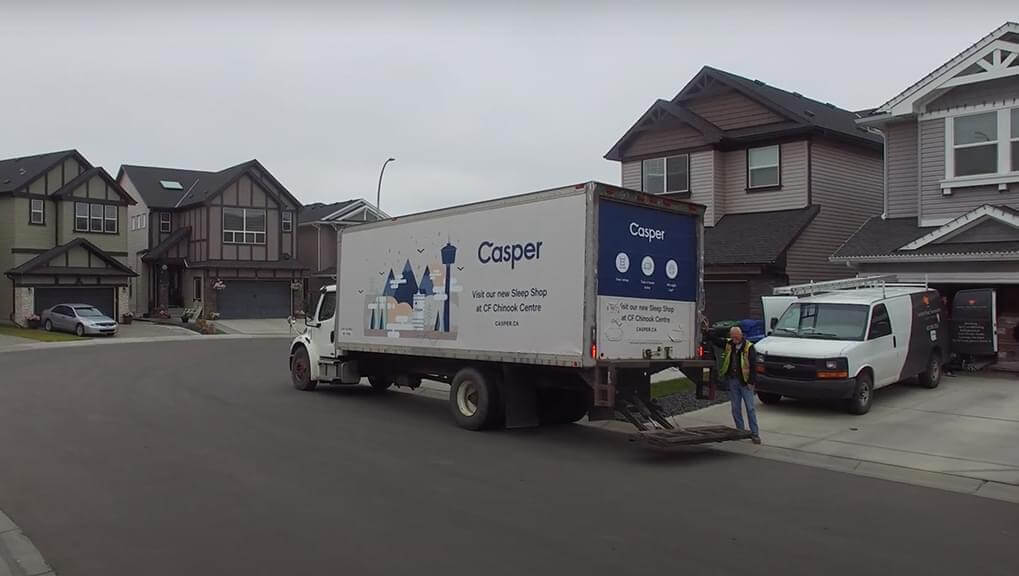
Movia is one of the few moving outdoor advertising companies that offers solutions for advertisers using patented beacon technology. They provide advertisers with real-time analytics on impression data, location data, and frequency reports through Wi-Fi scanning of mobile devices. This allows advertisers to adjust the location, environment, and the time display in response to the data they receive, allowing their campaign to reach maximum engagement and visibility. This technology paired with the ability to be mobile during a time when people are constrained to their neighborhoods provides great value to businesses.
The Bottom Line
As we can conclude by analyzing the OOH advertising industry, many opposing opinions arise on what the future holds for this medium. However, reliable advertising choices that are proving to be effective have a unique advantage, that being technology. Digital Signage, Programmatic DOOH, and Beacon technology mobile ads hold common features that are in high demand during a time when consumer behavior has changed drastically. The ability to meet consumers where they are, target the right ads to the right consumer, and analyze the results to retarget effectively are what separates these mediums from the average advertisements. Most importantly, during lockdown, these mediums reach consumers when they are outside of their homes – somewhere everyone is now longing to be.


